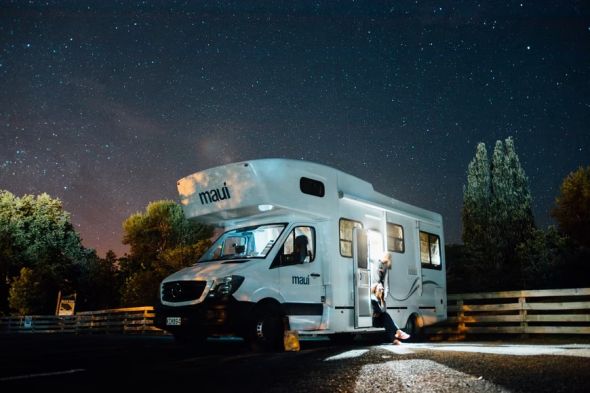
Having an RV is a great way to go on adventurous trips throughout the year. But first, you need to understand your RV and its requirements. Maintaining the power system of your RV is very important. For that, you have to know how its batteries work.
To save your money and time, you need to maintain the batteries, or else you need to replace them prematurely. So, if you want hassle-free traveling, maintain the expensive batteries and use power effectively. From this guide, you find different ways to maximize your power usage.
Power Usage in your RV
Watts and AMPS
People who have a rig of 50 AMP do not need to worry about power consumption. In some places, you may see 30 AMP is the only level available. You may not face this in RV parks, but sometimes in state parks, this trouble can occur. 30 and 50 AMP RV services are quite different. The difference is almost about 8400 watts. In 50 AMP servicing, two hot legs are used, whereas, at 30 AMP servicing, one hot leg is used. To power your 50 AMP RV with a 30 AMP servicing, you need to use an adapter that will scale down your power usage. With a 30 AMP servicing, you can only use one air conditioner with some other appliances.
Moreover, monitoring the power usage will become important, and you have to unplug all appliances when not in use to save power. Then you have to be careful about the already plugged-in small appliances. As a whole, they consume a significant amount of power.
Calculating wattage
The wattage of different appliances differs. But calculating appliance wattage is very easy. The two most important things to calculate wattage are power and AMPS. You can find the power requirement label on every item. Here, you need the input voltage. For most appliances, it is 120 volts. The AMPS can be of any amount. You need to multiply them to calculate the wattage of each appliance.
RV batteries
Batteries are the main driving force of your RV. You need a powerful battery bank to use pumps, inverters, TVs, ACs, slides, and other electronics. When we keep the batteries in good condition, most of our RV related issues get eliminated. They are your travel generators and offer you a comfortable journey.
Inspecting batteries
A monthly inspection is required to maintain RV batteries. You need to check the outside of the container thoroughly for cracks and breaks. All the battery connections and posts must stay clean, corrosion-free, and tight. Any loose ends can cause damage to your power system. If you find any damaged cable, you have to replace it immediately.
Sometimes fluids leak out of RV batteries. In such cases, you have to replace them immediately. Do not forget to wear protective gloves while doing this inspection and replacement. The next thing is, check if you have the right set of batteries. If you use a mismatching set, your whole power system will get damaged. Last but not least, when your batteries are fully charged you need to check the voltage.
Cleaning battery post
Frequent cleaning of your RV batteries will keep them in good condition for a longer time. Do not forget to disconnect them before cleaning. Unplug the negative, and then the positive cables like the batteries. You can also use the user’s manual for better guidance.
To clean the battery posts, you need to make a mixture of baking soda and hot water. By using a toothbrush, you can clean the cables and the battery posts and make them free of any corrosion. When they are clean, you need to wipe them dry and reattach them.
Checking water level
In some cases, you may find pretty low electrolyte levels in your battery cells. You need to fill the cells so that the plates are covered. You can only use distilled water for this purpose. This type of water is easily available in local stores. Using a battery watering system will make your task easier.
Charging batteries
To charge the batteries of your RV, you need to plug your RV into shore power. If you have a generator, you can also use that for charging. For low batteries, it may take some hours to get them fully charged.
Checking battery voltage
When the batteries are plugged into the shore power, you should see 13.7 volts. Every RV has a battery voltage meter indicating the voltage. When the batteries are disconnected, you can check the voltage again, and you should see 12.5 volts.
Conclusion
Owning and maintaining an RV can be overwhelming. This power usage guide will be helpful to all. You will understand how to save power and maintain your battery life. So, keep these things in mind to have a happy RVing.
We are happy to present this post to offer valuable information to our readers.


